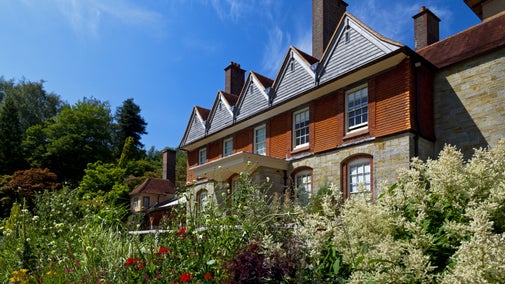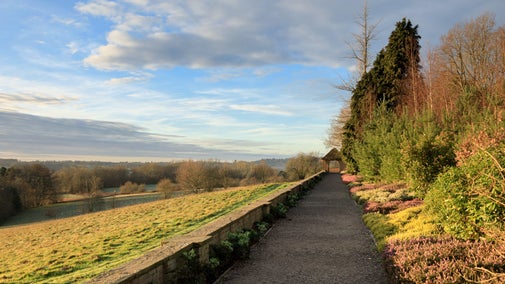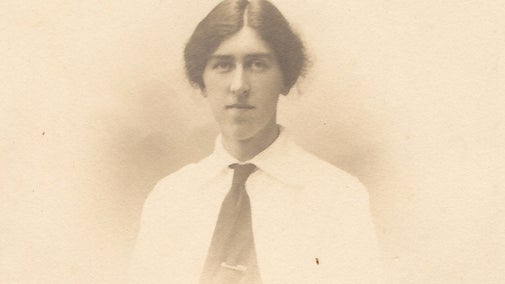
Discover more at Standen House and Garden
Find out when Standen House and Garden is open, how to get here, the things to see and do and more.

Standen was designed to look as though it has always been here, almost as if it has ‘grown’ out of the rock face and is a part of the landscape. However, the land that Standen now stands upon was originally made up of three farms: Stone, Hollybush and Standen. Discover the history of this modern, Arts and Crafts-inspired, country home.
Art historian Abigail Harrison-Moore recently called Standen one of the most charming examples of Arts and Crafts workmanship in the UK.
The location commands fine views of the Medway Valley and Ashdown Forest, so it's no surprise that James and Margaret Beale chose this as the site of their planned country house. In spring 1891, they enlisted the architect Philip Webb to lead the project.
Work began on Standen at the end of 1891. The plans for the house had been revised many times until all parties agreed on the design. Webb often drew inspiration from landscapes and historic buildings and decided to preserve and incorporate some of the medieval farm buildings on the site into his design.
Despite these historic influences, Standen was built as a thoroughly modern home, complete with central heating and electricity.
The Beales were a family without pretension, and they wanted their house to reflect that – a comfortable house in the country, rather than a lavish stately home.
Standen was constructed using local materials and traditional construction methods: only ‘the best materials and workmanship’ would do – a practice in line with the ideals of Arts and Crafts.
- William Morris
The house and garden were intended to be seen as a whole and were designed to complement each other. This followed William Morris’s theory that gardens were a continuation of a house and should be used as such. Margaret Beale was fascinated by plants and had a strong influence over how the garden was laid out.

Work finished at Standen in 1894, at a cost of £18,065, and the Beales moved in shortly afterwards. The family and Webb had developed a close working relationship, frequently communicating by letter. When work on the house finished the Beales gave Webb a silver snuff box, engraved with ‘When clients talk irritating nonsense, I take a pinch of snuff’, which hints at the kind of working relationship the two parties had enjoyed.
The family loved Standen and found it met their needs so well that they scarcely made any changes to it over the following years. It became the centre of Beale family life and a favourite place of the grandchildren, who spent fine days exploring the vast garden, and wet afternoons playing in the ‘Little Room’ at the end of the conservatory.
In 1972, the National Trust took over Standen. The house was in need of serious repair and the first custodian of the property, Arthur Grogan, set about revitalising the house and bringing it back to its former glory.

Find out when Standen House and Garden is open, how to get here, the things to see and do and more.
Discover the Beale family, who commissioned Standen to be designed and built by architect Philip Webb .

Explore the family home of the Beales, designed by Philip Webb and furnished throughout by Morris & Co fabrics and wallpapers. An Arts and Crafts inspired comfortable country retreat.

Stroll around the Arts and Crafts inspired hillside garden at Standen, explore themed outdoor rooms and find a rare collection of plants including ones grown by Margaret Beale.

Treat yourself to a seasonal meal or snack from the Barn Café at Standen House and Garden.

Bring your dog for a walk at Standen and explore acres of woodland paths. Dogs are also welcome in the formal garden so you can explore more with your four-legged friend. Standen House and Garden is a two pawprint rated place.

Helen Beale was the youngest daughter of James and Margaret Beale. She was independent and self assured, and was involved in nursing, the WRNS and the First World War.

Learn about people from the past, discover remarkable works of art and brush up on your knowledge of architecture and gardens.

Explore the objects and works of art we care for at Standen House and Garden on the National Trust Collections website.
